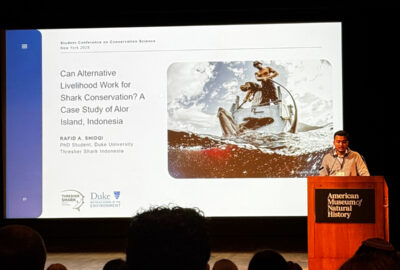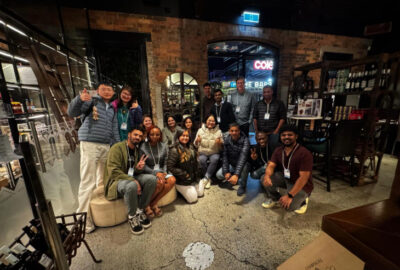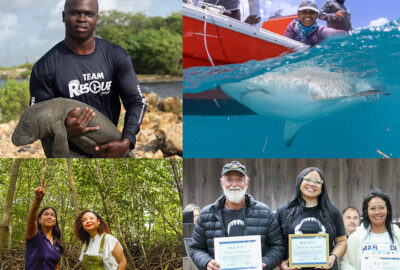Protecting Sea Turtles and Empowering Communities in São Tomé
On an island off of Central Africa, Marine Conservation Action Fund project leader Frederic Airaud and the Programa Tatô team are strengthening conservation efforts and offering alternative livelihood opportunities to former sea turtle harvesters and traders.
By New England Aquarium on Monday, November 24, 2025

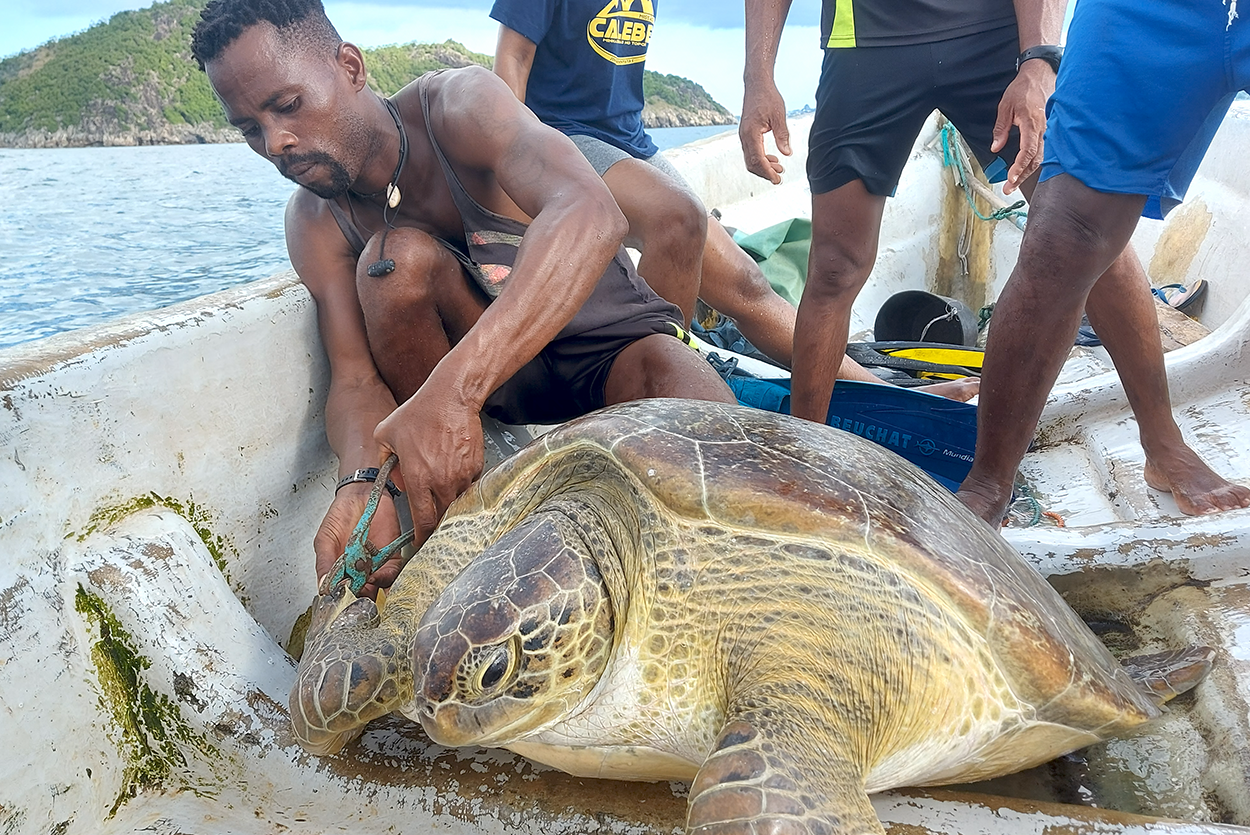
By Frederic Airaud
This post is one of a series on projects supported by the New England Aquarium’s Marine Conservation Action Fund (MCAF). Through MCAF, the Aquarium offers multi-faceted support to leaders from low- and middle-income countries who are spearheading community-based ocean conservation initiatives.
São Tomé Island, in the Gulf of Guinea, is one of the most important breeding and feeding grounds for sea turtles in the Eastern Atlantic. Here, four species return year after year to nest, including the critically endangered hawksbill and the vulnerable green turtle. Yet these species face mounting threats: illegal capture, incidental fisheries bycatch, erosion of nesting beaches, and pollution. With support from the Marine Conservation Action Fund (MCAF), Programa Tatô has been working to protect turtles and their habitats—while also building a more sustainable future for local communities.

Science and monitoring at sea and on land
From September 2024 to August 2025, our team of 64 collaborators, including 47 community agents, monitored 80 nesting beaches across the island. We documented 1,201 nests and successfully released more than 103,000 hatchlings into the ocean. Parallel to this, MCAF funding allowed us to strengthen our marine monitoring program at two critical sites: Cabras Islet in the north and Rolas Islet in the south. Through 52 free-diving surveys, we monitored 84 individual turtles, recording health conditions, tagging animals for follow-up, and identifying pressing threats such as a fibropapillomatosis, a tumor-causing disease, as well as fishing line entanglement, and spear-fishing attempts.
This dual focus—nesting beaches and marine foraging areas—provides a fuller picture of turtle populations and helps us design more effective protection measures.

Communities at the center
Sea turtle conservation in São Tomé is inseparable from community wellbeing. Many of our conservation agents are former turtle hunters who now dedicate their time to protecting the species they once relied on for income. This year, we advanced innovative livelihood projects:
- Bocado di Omali, São Tomé’s first artisanal fish preserves brand, created by women from fishing communities.
- Thirteen new micro-enterprises launched for women who once sold turtle meat, and are now running grocery shops, fisheries businesses, or tailoring ateliers.
- Ecotourism activities that welcomed more than 1,000 visitors from 30 countries, with part of the income reinvested in community infrastructure such as schools and water supply systems.
These initiatives prove that conservation and development can go hand in hand, offering alternatives that strengthen social equity while reducing pressure on marine resources.
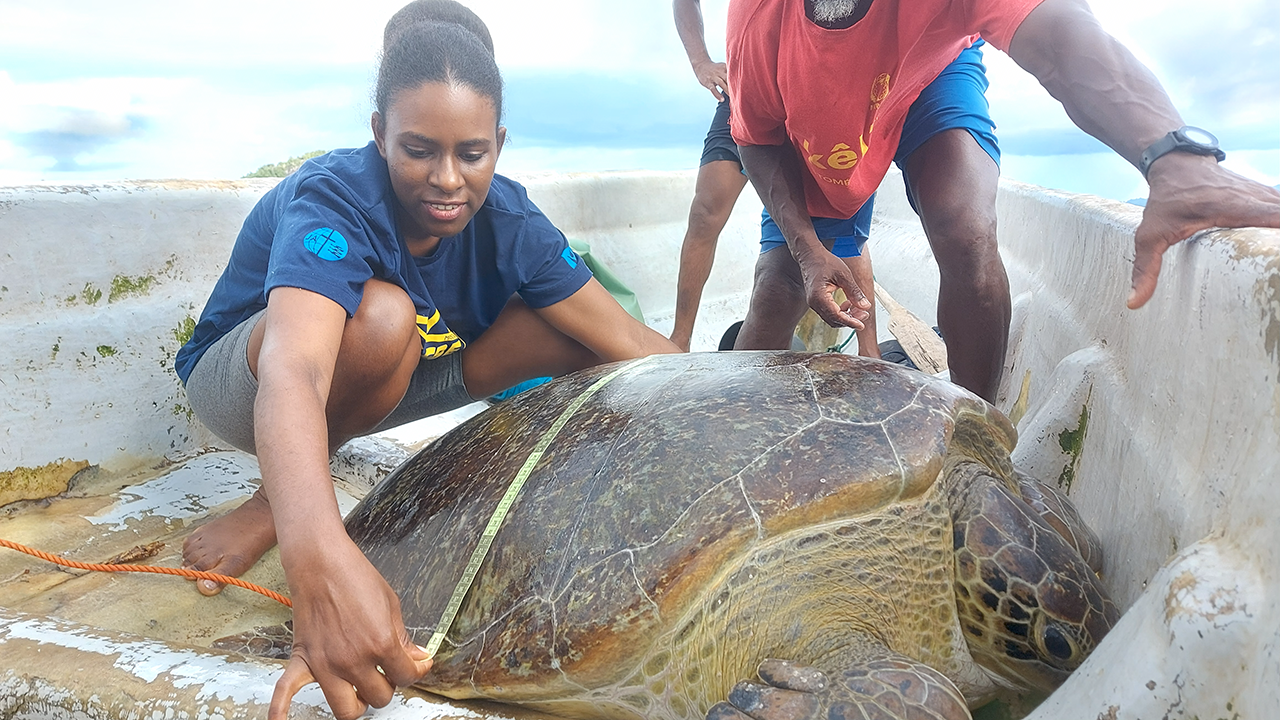
Challenges and lessons learned
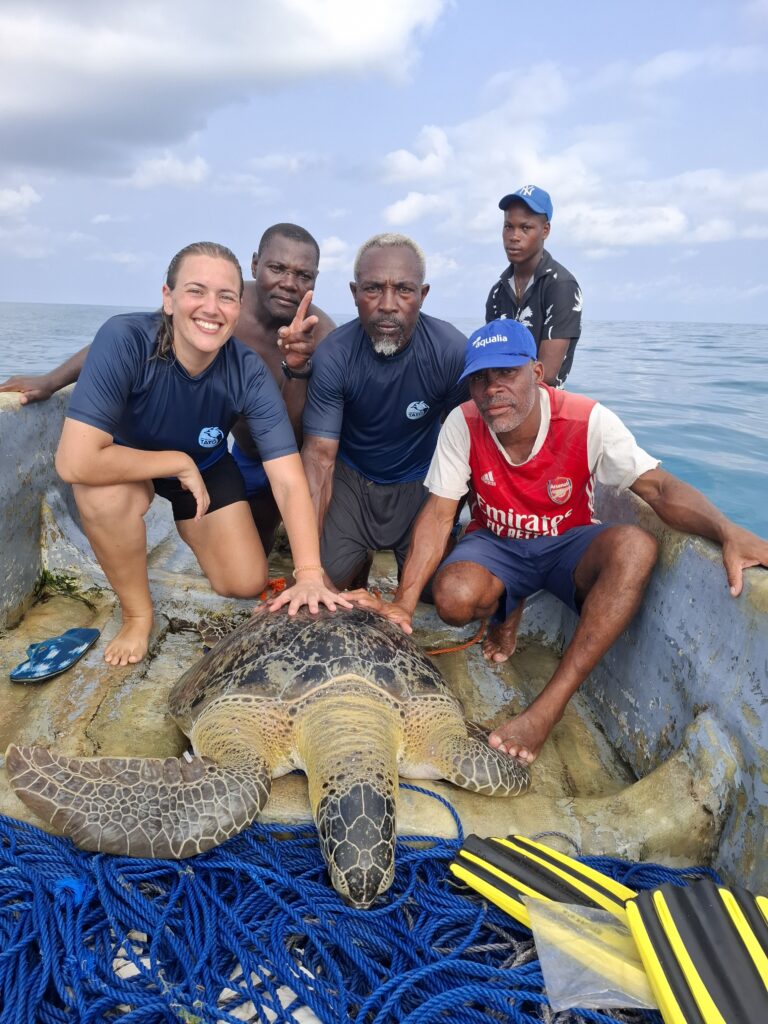
Not everything was easy. Illegal captures at sea remain a challenge beyond the reach of beach patrols. Predation of nests by roaming dogs and pigs also continues to cause losses. We addressed these threats with practical mitigation, such as relocating nests to hatcheries and deepening collaboration with enforcement agencies—training 16 new police officers this season to support nightly patrols.
The main lesson is clear: long-term success requires persistence, trust, and partnerships. Conservation cannot be imposed; it must be built with communities, step by step.
Looking forward
MCAF’s support has been instrumental in helping us expand marine monitoring, deepen community engagement, and share lessons across Central Africa through regional networks. The impact goes beyond numbers of nests or hatchlings—it is about creating a culture of stewardship, where coastal communities see themselves as custodians of sea turtles and of the marine ecosystems they depend on.
As we look ahead, our priority is to consolidate these gains, expand responsible fisheries practices, and continue offering sustainable economic alternatives. With consistent support and collaboration, we believe São Tomé can stand as a beacon of community-driven marine conservation in the Gulf of Guinea.

